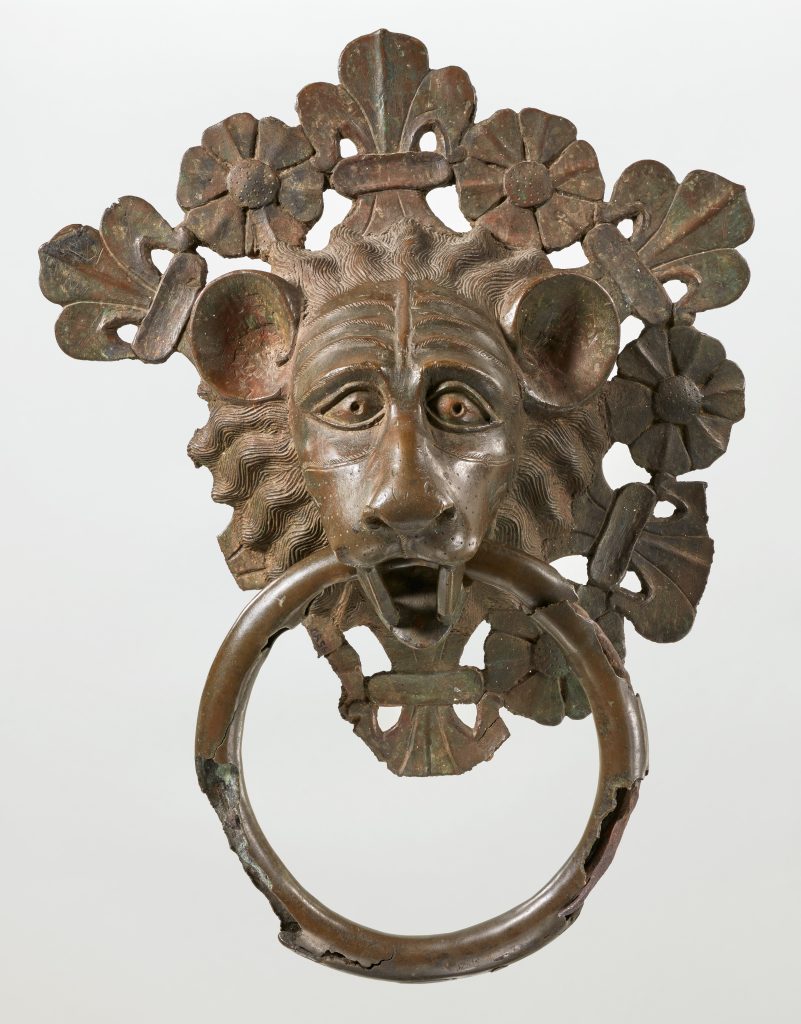
Lions’ heads with a ring in their mouths have decorated the doors of sanctuaries since antiquity. Their symbolism refers to aspects including vigilance and protection from evil powers, and they were sometimes also used for swearing oaths. This expressive lion’s head, with a (damaged) ring, originally decorated the door of the southern nave portal of Fana church, about fifteen kilometres south of Bergen. It has large almond-shaped eyes and strongly projecting ears. The head is surrounded by a (partly damaged) wreath of flowers and fleurs-de-lys.
Ursula Mende dated the door ring to the second quarter of the fourteenth century and assumed it to be of northern German origins, possibly Lübeck, from the entourage of Master Johannes Apengeter. Comparable, albeit less stylised door rings produced in Lübeck include examples found in Rostock and Osnabrück. Another prominent centre of medieval bronze casting, besides Lübeck, was the region around the Harz mountains (Hildesheim, Goslar, Braunschweig).
A further doorring in the Bergen collection probably originated from the south (main) portal of St Mary’s in Bergen (MA 643). Similarities to door rings from the main portal of Mainz Cathedral and Essen Minster may indicate origins in the Rhineland towards the end of the thirteenth century.
Northern Germany (Lübeck?), 1325-1350
From Fana near Bergen, in the museum since 1847
Bronze, iron
H 50 x W 40 x D 13 cm
Inv. no. MA 56